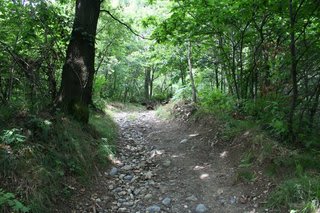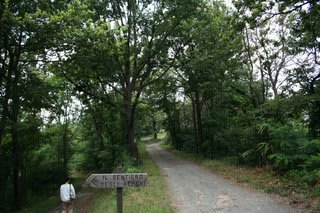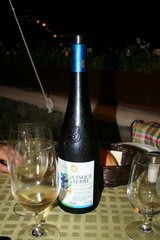Turin is quite a big city, but one of the nicest things about it is that, just across the Po river, stand beautiful and wild hills. On the top of the second tallest of those hills, from the old royal church of Superga, the whole city can be seen from above. The hills of Torino, in the middle ages, were wild, dangerous,and covered by deep woods. Then later, they were covered with vineyards and fields and the villas of the nobles from the city. Those hills, for centuries used to be the place from where the food (and wine) for the population of Turin was grown. Then, in the last 100 years, most of the fields in the hills were abandoned and left to the wilderness again. Now, that very few farmers remain, some of their products are being discovered again, protected, and saved from being forgotten.


Today we will travel through the hills of Torino and know some of the products which come from there. From the city, just after having crossed the river, the streets start going up the valleys on the hills. There, now, beautiful mansions surrounded in green woods stand. After some kilometers, the mansions become rarer, and the woods denser and taller. We are still in the "City of Turin", but there are some small hill villages which still look like separate towns. Reaglie, or Cavoretto, for example. Then, having crossed the pass between Aman mount and the Colle della Maddalena, we meet the small city of Pino Torinese. Pino literally means "pine". This city is known as the "city of the stars", because it hosts the astronomical Observatory of Torino (http://www.oato.inaf.it/), with several historical telescopies and a modern one. From there, the university of Turin still makes its observation. And from there, everyone can learn about stars, galaxies, and planets. From downtown Pino, we can then go still up and take the "Panoramic Road" which leads to Superga. Before getting to Superga, the road crosses the Superga Regional Park. This park, together with the "Wood of Vaj" some kilometers to the North, makes up the "Park of the Torino Hills", which was created to protect a natural environment so close to the big city. There are several mountain tracks which go deep in the woods, where big oak and chestnut trees grow and where wild boars have returned. There, surrounded by nature, it is easy to forget how close we are to a busy city. From the peak of Mount Aman, Superga can be seen from an unusual angle to us, used to see its facade from the lower Turin.




After having left the park and its woods, we get back to Pino and continue to go East. Now we reach Chieri. Chieri, in the past, was a strong town, and in the Middle Ages it was decidedly stronger than Turin. Now, a lot of centuries have passed, but this small city of 30 000 people, only 30 km from Torino, still has a different feeling. Walking downtown, so many monuments can be seen from 1300 to 1500 which show the city was rich and powerful.





Then we leave Chieri, and go still a little to the east, to look for one of the treasures of this area. Chieri used to be famous for its wine, the "Freisa di Chieri". Freisa is a typical piemonteis varietal of grape, which is used all around the region. But in Chieri it is absolutely traditional. Wines made with Freisa used to be the daily wines of everyone in the Asti and Torino region. In the last 30 years, Freisa had weakened very much against other Piemont wines considered more prestigious, but luckily, it is being rediscovered. Freisa wine is a red wine, with a fruity taste, much lighter than Barbera or Nebbiolo, and less dark than Dolcetto. It can be found in several versions: sparkling, plain, and sweet. Once, sweet Freisa from Chieri was one of the most beloved wines for the people of Torino. Freisa is also sometimes used to make rose and white wines. In the small town of Andezeno, one of the most famous producers of Freisa sells almost every version of it (save for the sweet one) and even makes a barrique version. Apart from selling wines, he also maintains a small museum of traditional children games and objects from the old times of country farming. We could see the fermentation tanks and the small bottling and labeling plants.
Then we traveled North on a small country road, crossed the village of Moncucco Torinese, which is in the province of Asti, and reached the village of Cinzano, the center of which is nested on the top of a hill. Nearby, we found the home of another small producer which makes other wines from the hills of Torino. Those wines are sold with the "Collina di Torino" DOC denomination, of which there are five different versions. One is simply the "Red" which mixes Freisa and Barbera varieties. Then there is the Barbera, the Malvasia which is an ancient aromatic variety from Greece, developed in a different way in those hills, the Cari which is a local sweet wine made only in the Torino area and famous since the 17th century, the Bonarda whic is made from a piemonteis variety which used to be planted amongst Freisa.
Rossotto vini

参加しています。
よかったらクリックお願いします。


Today we will travel through the hills of Torino and know some of the products which come from there. From the city, just after having crossed the river, the streets start going up the valleys on the hills. There, now, beautiful mansions surrounded in green woods stand. After some kilometers, the mansions become rarer, and the woods denser and taller. We are still in the "City of Turin", but there are some small hill villages which still look like separate towns. Reaglie, or Cavoretto, for example. Then, having crossed the pass between Aman mount and the Colle della Maddalena, we meet the small city of Pino Torinese. Pino literally means "pine". This city is known as the "city of the stars", because it hosts the astronomical Observatory of Torino (http://www.oato.inaf.it/), with several historical telescopies and a modern one. From there, the university of Turin still makes its observation. And from there, everyone can learn about stars, galaxies, and planets. From downtown Pino, we can then go still up and take the "Panoramic Road" which leads to Superga. Before getting to Superga, the road crosses the Superga Regional Park. This park, together with the "Wood of Vaj" some kilometers to the North, makes up the "Park of the Torino Hills", which was created to protect a natural environment so close to the big city. There are several mountain tracks which go deep in the woods, where big oak and chestnut trees grow and where wild boars have returned. There, surrounded by nature, it is easy to forget how close we are to a busy city. From the peak of Mount Aman, Superga can be seen from an unusual angle to us, used to see its facade from the lower Turin.




After having left the park and its woods, we get back to Pino and continue to go East. Now we reach Chieri. Chieri, in the past, was a strong town, and in the Middle Ages it was decidedly stronger than Turin. Now, a lot of centuries have passed, but this small city of 30 000 people, only 30 km from Torino, still has a different feeling. Walking downtown, so many monuments can be seen from 1300 to 1500 which show the city was rich and powerful.





Then we leave Chieri, and go still a little to the east, to look for one of the treasures of this area. Chieri used to be famous for its wine, the "Freisa di Chieri". Freisa is a typical piemonteis varietal of grape, which is used all around the region. But in Chieri it is absolutely traditional. Wines made with Freisa used to be the daily wines of everyone in the Asti and Torino region. In the last 30 years, Freisa had weakened very much against other Piemont wines considered more prestigious, but luckily, it is being rediscovered. Freisa wine is a red wine, with a fruity taste, much lighter than Barbera or Nebbiolo, and less dark than Dolcetto. It can be found in several versions: sparkling, plain, and sweet. Once, sweet Freisa from Chieri was one of the most beloved wines for the people of Torino. Freisa is also sometimes used to make rose and white wines. In the small town of Andezeno, one of the most famous producers of Freisa sells almost every version of it (save for the sweet one) and even makes a barrique version. Apart from selling wines, he also maintains a small museum of traditional children games and objects from the old times of country farming. We could see the fermentation tanks and the small bottling and labeling plants.
Then we traveled North on a small country road, crossed the village of Moncucco Torinese, which is in the province of Asti, and reached the village of Cinzano, the center of which is nested on the top of a hill. Nearby, we found the home of another small producer which makes other wines from the hills of Torino. Those wines are sold with the "Collina di Torino" DOC denomination, of which there are five different versions. One is simply the "Red" which mixes Freisa and Barbera varieties. Then there is the Barbera, the Malvasia which is an ancient aromatic variety from Greece, developed in a different way in those hills, the Cari which is a local sweet wine made only in the Torino area and famous since the 17th century, the Bonarda whic is made from a piemonteis variety which used to be planted amongst Freisa.
Rossotto vini

参加しています。
よかったらクリックお願いします。




































